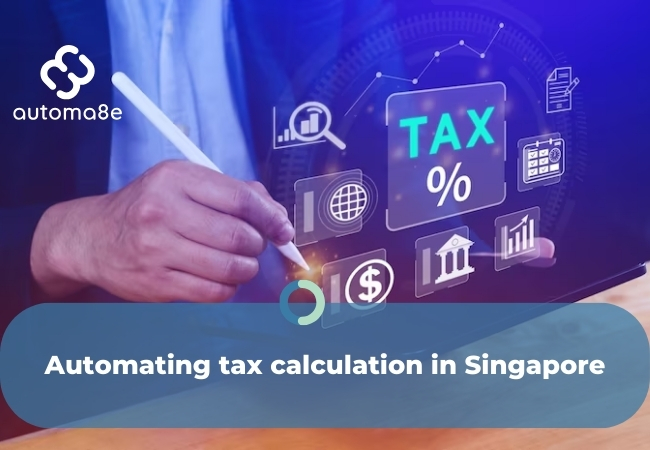Automating tax calculation in Singapore for the year 2024 involves leveraging technology and software solutions to streamline the process. Here are steps and considerations for corporates looking to automate tax calculation in Singapore:
1. Understand Singapore Tax Regulations:
Stay informed about the latest tax regulations and changes in Singapore, covering aspects such as corporate income tax, withholding tax, GST, and other relevant taxes. Regularly check updates from the Inland Revenue Authority of Singapore (IRAS) to ensure compliance with the most recent rules.
2. Implement Accounting Software:
Invest in robust accounting software that supports Singaporean tax requirements. Look for features such as automated financial reporting, tax computation modules, and integration capabilities with other business systems.
3. Tax Computation Modules:
Choose tax computation modules that cater to Singapore’s tax structure. These modules should be able to handle complex calculations, deductions, and exemptions specific to the country. Verify that the software aligns with the prevailing tax rates for the years 2020-2024.
4. Electronic Filing Platforms:
Leverage electronic filing platforms provided by IRAS for efficient and accurate submission of tax returns. Explore features such as e-Filing and Pre-filling of Returns to streamline the filing process and minimize the chances of errors in data submission.
5. Cloud-Based Solutions:
Opt for cloud-based tax calculation solutions to enjoy benefits such as scalability, accessibility from anywhere, and automatic updates. Cloud platforms also provide enhanced security features and disaster recovery options, ensuring the safety and availability of your tax data.
6. Automation of Data Entry:
Implement automation tools to extract and input financial data into the tax calculation system. This could involve integrating the software with bank accounts, invoicing systems, and other financial databases, reducing the need for manual data entry and minimizing errors.
7. Regular Software Updates:
Regularly update your tax calculation software to incorporate the latest changes in tax regulations. Ensure that your software provider offers timely updates and patches to keep the system compliant with the evolving tax landscape in Singapore.
8. Data Security:
Prioritize data security by implementing encryption, access controls, and regular security audits. Comply with data protection laws in Singapore and adopt best practices to safeguard sensitive financial and tax information.
9. Training for Staff:
Provide comprehensive training to your finance and accounting staff on using the automated tax calculation system. Ensure they understand how to navigate the software, input data accurately, and interpret the results. Ongoing training can help them stay updated on any software enhancements or changes in tax regulations.
10. Regular Audits:
Conduct regular internal audits to verify the accuracy of automated tax calculations. Identify and address any discrepancies promptly to maintain compliance and financial accuracy.
11. Engage Tax Professionals:
Collaborate with tax professionals or consultants who specialize in Singaporean tax laws. Their expertise can provide valuable insights, ensure compliance, and offer strategic advice on optimizing your tax position.
By following these detailed steps, corporates can establish a comprehensive and effective system for automating tax calculation in Singapore, promoting accuracy, compliance, and efficiency in financial operations.
Taxoma8e:
Taxoma8e is a groundbreaking AI tool that has revolutionized the realm of taxation. With Taxoma8e, the days of laborious manual tax processes are outdated. This innovative solution has completely transformed the way businesses handle their tax and compliance obligations. Taxoma8e’s automation capabilities streamline and simplify tax-related tasks, ensuring accuracy and efficiency in tax management. By harnessing the power of AI, Taxoma8e has not only eliminated the need for time-consuming manual tax work but has also significantly reduced the risk of errors, ensuring that businesses can navigate the complexities of taxation with ease and confidence. It is a significant change in the world of taxation, empowering businesses to focus on their core operations while leaving the intricacies of tax management to this cutting-edge AI tool.
